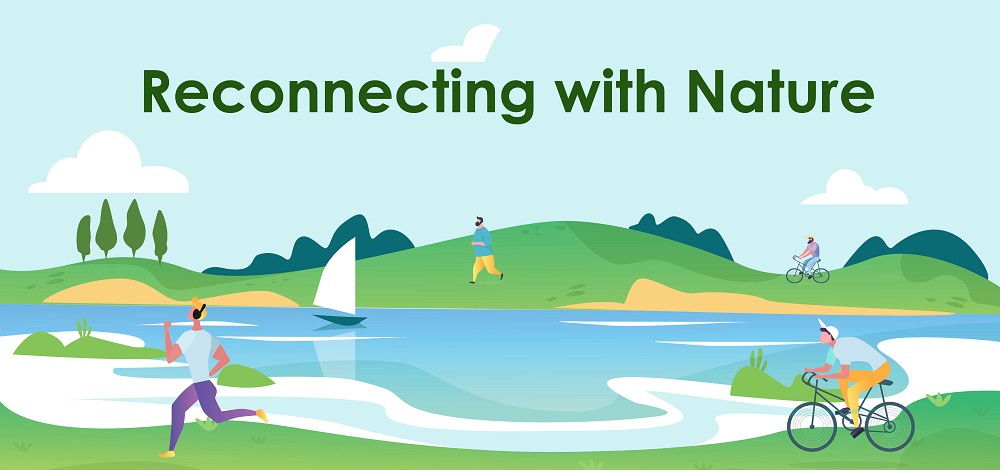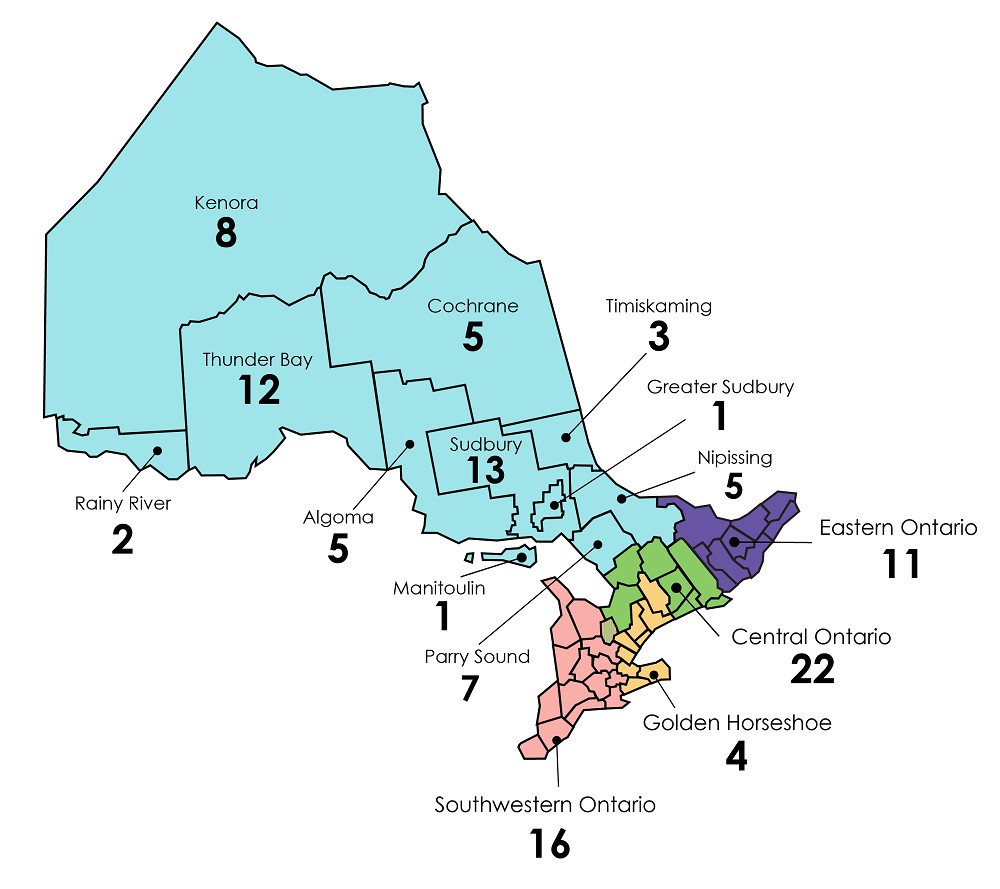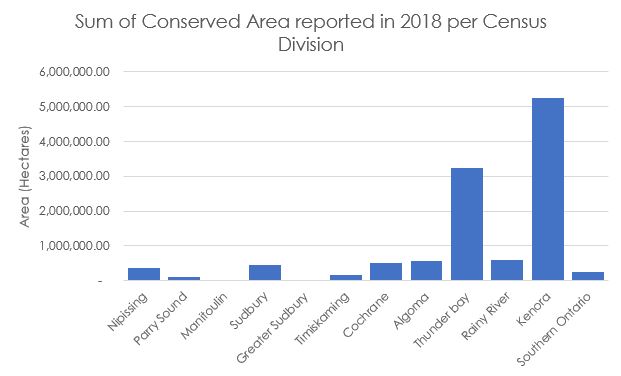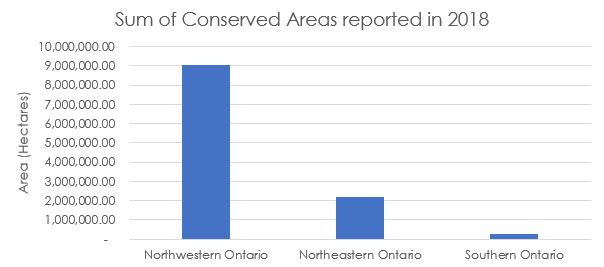Northwestern Ontario: the grass IS greener!
June 1, 2020 - Spending time in nature was found to be associated with increased health and well-being. Immersing yourself in nature that is protected by environmental experts helps ensure that people can access nature while mitigating damage.

Ontario Provincial Park’s mission is to provide safe and accessible areas for people to enjoy nature while protecting natural landscapes and species. NPI tallied the number operating of Provincial Parks per Northern Ontario’s census district (CD) and Southern Ontario’s subregions (Figure 1). In comparison to non-operating provincial parks, operating provincial parks have visitor centers, parking and any basic facilities. In the Northwest, the Thunder Bay District has 12 operating provincial parks, the Kenora District has 8 and the Rainy River District has 2. Adding the number of operating provincial parks for these three districts combined equates to 22 in the Northwest – a number equivalent or greater than any southern Ontario region! Population density is lower in Northwestern Ontario compared to all Southern Ontario subregions[1]. This suggests that Northwestern Ontarians are closer to a variety of operating provincial parks that are likely less populated than those found in Southern Ontario. This increased access to camping in wilderness largely untouched by many humans may provide more opportunities to observe uncommon species.
Figure 1

Source: Ontario Parks. Park Locator
Conserved areas are terrestrial and marine (land and freshwater) areas in which access and use are controlled to conserve biodiversity. This is vital to our future as human beings because healthy ecosystems provide clean water, pollination and mitigate climate change. The Canadian Protected and Conserved Areas Database records each Canadian conservation area and provides the hectares of land and marine areas they cover and the year that the conservation title came into effect. To compare the amount of conserved land in Northern Ontario, NPI summed the terrestrial conservation areas for each census district (CD) in Northern Ontario (Figure 2). Not surprisingly, the Kenora District – which has the largest area - has the highest amount of conserved areas with 5,228,777 hectares. Interestingly, the Thunder Bay District has approximately 5.24 times more conserved areas than the Cochrane District, even though the Cochrane District is larger in land area. This can be partly explained by the conservation area dedicated to Lake Superior.
Figure 2

Source: Statistics Canada. Canadian Protected and Conserved Areas Database
If you compare the sum of the conserved areas in Northwestern Ontario with the conserved areas in Southern Ontario, Northwestern Ontario regions have approximately 34 times more conserved areas (Figure 3)! This means that Northwestern Ontario has a very important role in environmental sustainability. These regions help ensure that people can continue to enjoy nature and receive the health benefits of the natural environment now and for generations to come!
Figure 3

Source: Statistics Canada. Canadian Protected and Conserved Areas Database
[1] Statistics Canada 2016 Census Data
Write for us
Maia Kvas is an Experience North Summer Placement - Research Analyst
The content of Northern Policy Institute’s blog is for general information and use. The views expressed in this blog are those of the author and do not necessarily reflect the opinions of Northern Policy Institute, its Board of Directors or its supporters. The authors take full responsibility for the accuracy and completeness of their respective blog posts. Northern Policy Institute will not be liable for any errors or omissions in this information, nor will Northern Policy Institute be liable for any detriment caused from the display or use of this information. Any links to other websites do not imply endorsement, nor is Northern Policy Institute responsible for the content of the linked websites.
Northern Policy Institute welcomes your feedback and comments. Please keep comments to under 500 words. Any submission that uses profane, derogatory, hateful, or threatening language will not be posted. Please keep your comments on topic and relevant to the subject matter presented in the blog. If you are presenting a rebuttal or counter-argument, please provide your evidence and sources. Northern Policy Institute reserves the right to deny any comments or feedback submitted to www.northernpolicy.ca that do not adhere to these guidelines.
